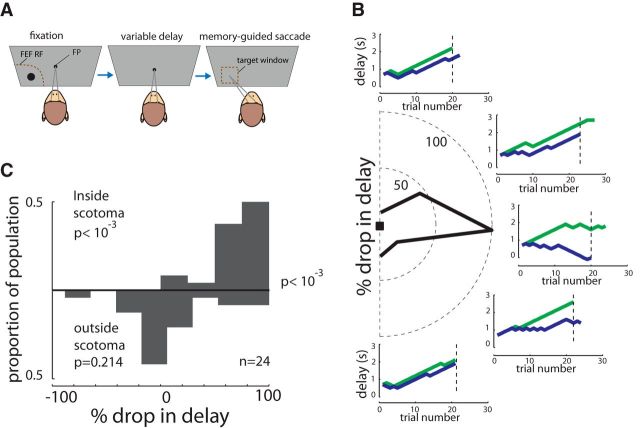Figure 2.
Effects of FEF inactivation on memory-guided saccades. A, In the memory-guided saccade task, the monkey is required to remember the location of a cue (black circle) across a variable delay and to make a saccade to the remembered cue location after the go signal (fixation spot offset). B, Performance of a monkey in a sample experiment for five different locations before and after FEF inactivation. The y-axis in each plot is the delay duration, adjusted separately at each location via a staircase procedure. In this procedure, a correct trial results in an increase in the delay duration for the next trial at that location, whereas an incorrect response reduces the delay for the next trial. Green and blue lines illustrate the performance before and after FEF inactivation, respectively. Steep staircase functions indicate an ability to perform the task at increasingly long delays. In contrast, flat or declining functions indicate relatively poor ability, or complete inability (e.g., blue in middle plot), to remember cue location for even very short delays. The black polar plot illustrates the percentage drop in delay due to inactivation measured after an equal number of trials in each location (dashed line in each plot). C, Distribution of percentage drop in delay for 24 inactivation experiments for cue locations inside the scotoma (top) and location 90° (theta) away from that location (outside scotoma, bottom).

